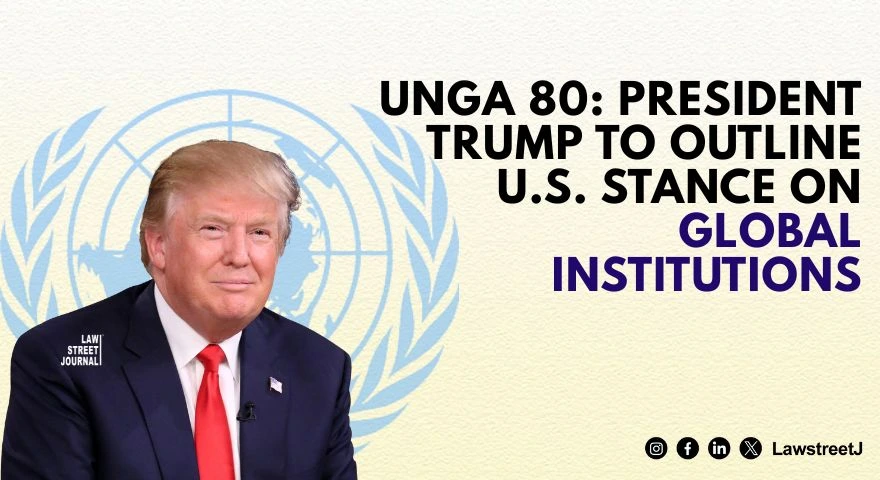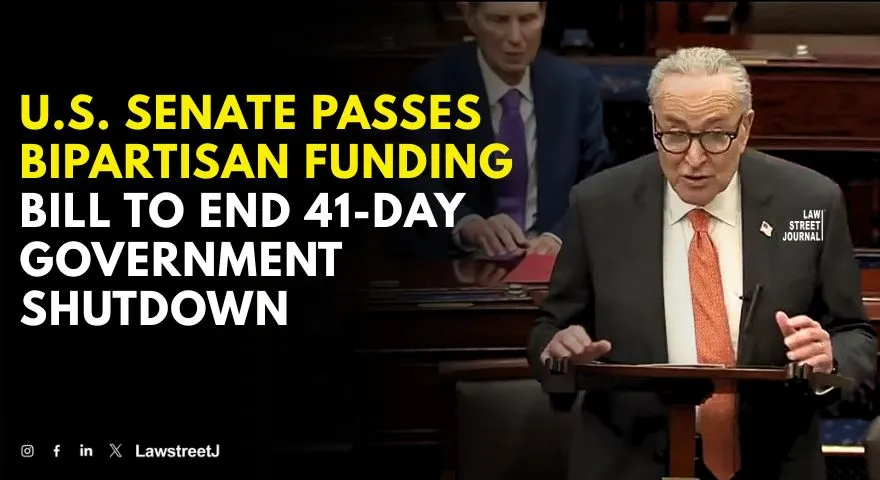United States: The federal government reopened on Wednesday after President Donald Trump signed a temporary spending bill, ending a 43-day shutdown — the longest in United States history. The legislation, approved earlier by both chambers of Congress, provides funding for all federal agencies through January 30, 2026. It restores government operations that had been suspended since early October and authorizes the payment of wages owed to roughly 800,000 federal employees.
The House of Representatives passed the measure by a 222–209 vote, mostly along party lines, while the Senate cleared it earlier in the week. President Trump signed the bill in the Oval Office, joined by Republican lawmakers and senior administration officials. Officials said the measure ensures that departments can resume normal operations and meet outstanding financial and legal obligations. It does not contain long-term appropriations or new policy provisions. The legislation serves as a continuing resolution, a temporary funding instrument that maintains government spending at existing levels.
Congressional Approval and Administrative Implications
The shutdown ended after weeks of negotiations between congressional leaders and the White House. Lawmakers reached an agreement on a stopgap bill designed to keep agencies operating while talks continue on a comprehensive budget package. The law restores compliance with the Antideficiency Act, which prohibits federal agencies from spending money not appropriated by Congress.
During the shutdown, thousands of employees were furloughed and many programs were halted. Essential workers in air traffic control, border protection, and medical services remained on duty without pay. With funding reinstated, agencies have begun calling back furloughed personnel and restarting administrative functions. The Office of Management and Budget (OMB) directed departments to resume normal operations immediately and to report recovery progress by the end of the week.
Legal experts confirmed that the legislation allows federal departments to process retroactive compensation for employees and contractors affected by the funding gap. Payments are expected to be issued within the next pay cycle. The measure covers all major federal agencies, including the Departments of Defense, Homeland Security, Health and Human Services, Transportation, and Treasury, along with independent entities such as NASA, the Environmental Protection Agency, and the Securities and Exchange Commission. Budget analysts noted that the temporary law maintains spending at current levels and avoids the introduction of new fiscal policies, giving Congress additional time to negotiate funding priorities before the January deadline.
Impact on Federal Workforce and Public Services
The shutdown left about 800,000 federal workers either furloughed or working without pay. The lack of salaries caused financial strain across multiple states, particularly in Washington, D.C., and other regions with large numbers of federal employees. Essential employees such as air traffic controllers, TSA officers, and border agents continued to report to duty but missed two consecutive paychecks. Several unions representing federal staff filed complaints seeking stronger protections for timely payment during funding lapses.
Public services experienced significant delays. The Transportation Security Administration (TSA) reported staffing shortages that led to longer airport security lines. The Internal Revenue Service (IRS) postponed tax processing, while national parks closed or operated with limited staff. Programs providing food assistance, including the Supplemental Nutrition Assistance Program (SNAP), were temporarily affected in some states. Federal contractors also experienced delays in payments for completed work.
Following the President’s approval of the funding bill, agencies began issuing instructions to restore full operations. Retroactive pay for employees and contractors is authorized under the new law, with departments prioritizing critical staff reassignments and pending service backlogs. Economic researchers estimated that the shutdown caused temporary reductions in productivity, delayed public projects, and short-term losses in consumer spending. Officials said it may take several weeks for all affected systems to return to full functionality.
The shutdown resulted from a standoff between Republican and Democratic lawmakers over healthcare subsidies and spending allocations. Democrats pushed to include an extension of federal health insurance subsidies, while Republicans opposed additional expenditures not directly tied to core appropriations. President Trump called the deadlock “a matter of fiscal responsibility” and said his administration would not agree to what he described as unrelated policy demands. Negotiations stalled for more than six weeks before congressional leaders agreed to pass a clean temporary resolution.
The impasse revived debate over the Senate filibuster rule, which requires a 60-vote majority to advance most legislation. President Trump reiterated his support for ending the rule, arguing that it hinders legislative efficiency. Most Republican senators, however, maintained their opposition to changing Senate procedure, citing the need to preserve checks within the legislative process.
Legal and constitutional analysts noted that repeated funding lapses undermine confidence in government stability and complicate the separation of powers between the executive and legislative branches. While the Constitution grants Congress authority over federal spending, long-term stalemates limit the ability of agencies to deliver essential services and maintain continuity of governance.
The signing of the temporary funding bill ends the 43-day partial shutdown and restores full federal operations. It ensures payment of back wages to employees and authorizes agencies to resume normal work under current budget levels until January 30, 2026. The measure resolves the immediate funding crisis but leaves unresolved disputes over fiscal priorities and policy commitments. Lawmakers now face a narrow timeline to finalize a comprehensive budget and avoid another government closure early next year. The shutdown, the longest in U.S. history, highlighted structural weaknesses in the federal budgeting process and reaffirmed the need for stable, bipartisan cooperation to maintain uninterrupted public administration.











